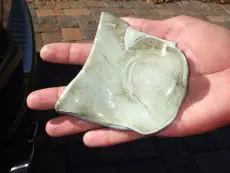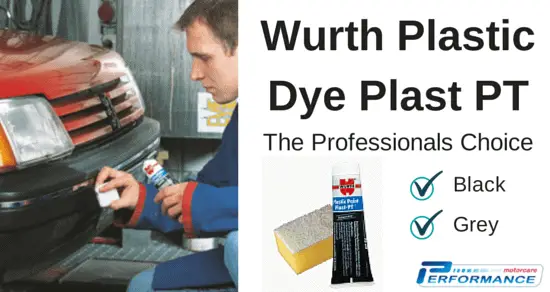 In this latest post we look at what is a clay bar and how best to use them in detailing your car, helping you to get the best finish and shine you can out of the precious time you spend on your cherished motor. I’ll also detail a few of my personal preferences in the best clay bars to choose at the bottom of the post.
In this latest post we look at what is a clay bar and how best to use them in detailing your car, helping you to get the best finish and shine you can out of the precious time you spend on your cherished motor. I’ll also detail a few of my personal preferences in the best clay bars to choose at the bottom of the post.
Although now much more commonly used in the detailing fraternity than ever before, the clay bar is still one of detailings best kept secrets.
Using a clay bar can significantly improve the surface of your paintwork to give a silk smooth finish and ultimately help achieve the incredibly deep shine you are always looking for.
Even after over 10 years of first recommending them we still get asked what is a clay bar and do they really work? Hopefully, this article will provide you with the answers to these questions.
So what is a clay bar, why does it work and how do you use it…?
Unless you are fortunate enough to be able to keep your motor sealed in a giant glass display case, it will always be subject to attack from air and water-borne pollution from the second it leaves the factory paint shop.
Much of this pollution and contamination (“dirt”) is so fine it is virtually invisible but can comprise of many common particulates such as brake dust, acid rain, road film and tar and many fine particles of pollutants from factories, fires etc. All of which, at some point, come falling down and begin to bond into the surface of your paintwork. And whilst you can’t see it, will make the surface of your paint rough and begin the process of oxidisation.
Of course, some of this “dirt” can be removed by washing or pre-wax cleaning compounds – but not all of it. This is where the clay bar comes into its own.
Clay bars have been used extensively in bodyshops for many years, primarily for the removal of overspray. More latterly clay mitts have also become very popular.
What is a Clay Bar?
Essentially clay is a flexible putty-like substance with an extremely light polishing quality that when used with a suitable lubricant will apply a polishing action to remove microscopic and other protrusions from your paint surface, without affecting the underlying paint.
Thus effectively removing contaminant particles protruding above the surface of your paint to make it extremely smooth to the touch and much much cleaner.
Our first experience…
When Ali and I first encountered clay bars, we were to say the least, very skeptical. After all we were washing, polishing and waxing to get a brilliant shine – So how could there be any more “dirt” on our paintwork?
All I can say is be prepared for a surprise. The first time we used it, even after a thorough wash, we were amazed at the brown film that quickly covered the surface of our clay bar, and all from the “dirt” we couldn’t see. But the best was yet to come – the smoothness of the paint surface was even more amazing. At the time we didn’t think we could get it any smoother than we had been doing – but boy were we wrong.
So essentially, when used the clay bar will remove the residual contaminants from the surface of your paintwork without being abrasive to the paint itself and therefore ensuring the smoothest possible surface for polishing and waxing. After all the last thing you want to do is put a wax or sealant on your paint and effectively seal in surface “dirt” that was still present.
Here is an example of a clay bar that has been used on just washed paintwork that “looked” clean:
So how do you use a clay bar…?
The key to using clay safely, is lubrication. Although there are products on the market that state they can be used with just water – for the first time user we would always err on the side of caution.
The ideal clay bar lubricant being one that is specially formulated for use with clay and does not contain a high degree of alcohol in its formula.
Alternatively a fresh dilution mix of a quality motor wash shampoo can also be used as an effective lubricant, as long as you have plenty on hand.
If using a good quality car shampoo for your lubricant, halve the standard dilution. Thus if the standard dilution recommends 10:1 i.e 10 parts water to 1 part shampoo, then for your lube use 5:1.
The first step is to thoroughly wash and dry your motor, using a quality car wash shampoo quality motor shampoo.
As with most detailing, claying should not be done in direct sunlight or on hot surfaces. A good idea before you start is to cut your clay bar into 2 or 3 smaller pieces, depending on the original size.
Thus if you accidentally drop your bar, you have some uncontaminated clay to continue with. If you do accidentally drop your clay on the ground, do not attempt to pick the grit out or knead it round so you can’t see them – THROW IT AWAY.
It is also a good idea to roll or knead the clay before use to ensure it is as soft and malleable as possible. After having done this, simply flatten out your clay across your fingers and you are ready to proceed.
Next…
Spray your lubricant onto a small area of your paintwork. Always work in small areas and not whole panels at a time.
Then spray your clay with the lubricant and rub, with medium to light pressure in a forwards/backwards motion across the paint surface. Always ensuring you do not allow the lubricant to dry out in the area being worked.
It will only take a few passes across your paint to feel the difference. Once you are happy that you have a smoother surface or a visible contaminant has been removed, such as a tar spot or overspray, then wipe over with a quality microfibre cloth and move on to the next section.
Remember to keep a regular check on your clay bar. If it pulls away large particles of “dirt” such as tar spots, pick these out immediately. And when your clay starts to become “dirty” then knead it over to expose a fresh surface.
Finally…
Don’t forget to give your paintwork a final wash and dry to remove any residue from the lubricant.
You are now ready to polish and wax over what should now been and extremely clean and smooth surface.
As in many things it is ultimately the time and preparation put in at the beginning that will determine the quality of the finish at the end. And clay barring is no exception.
In a nutshell that is the secret of clay and what was one of detailings best kept secrets.
If you have not used clay before we hope this has helped explain what is a clay bar and given you the insight to give it a try. If you are already using it we hope it has given you a better understanding of how and why you should continue.
And on a final note, you should only need to clay once or twice a year and when you have finished and if your clay is not too dirty then safely store it away in a clean plastic closable container or sealable polythene bag, to ensure it does not pick dirt and dust whilst not in use.
We hope this has helped explain what is a clay bar and also how to use a detailing clay bar to help get the best shine you can on your car.
My Best Clay Bar Selection:
What Is A Clay Bar Related Articles:
Meguiars Clay Bar – Which Is Best One To Choose & Why? – Go to article




